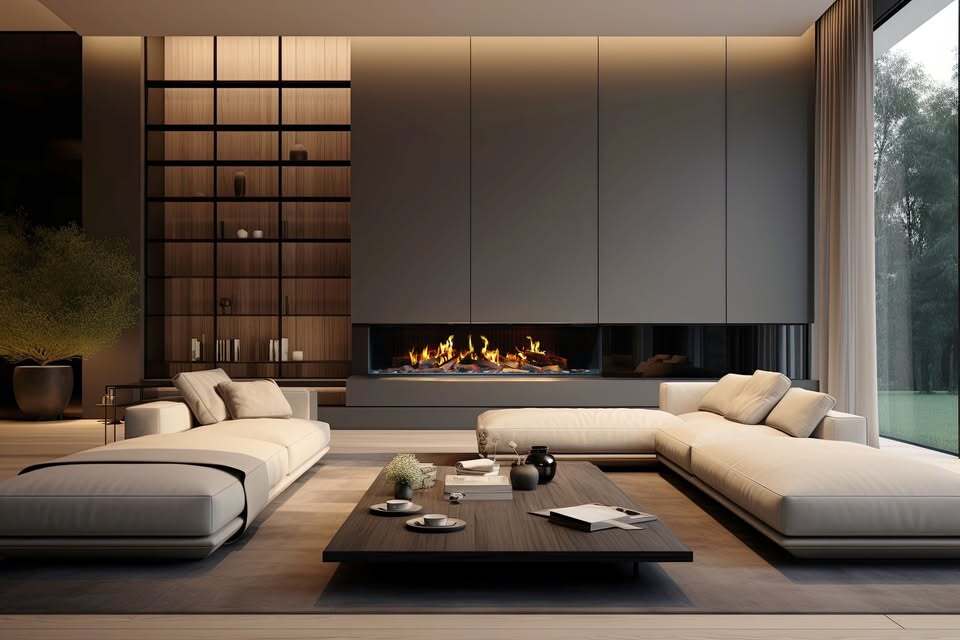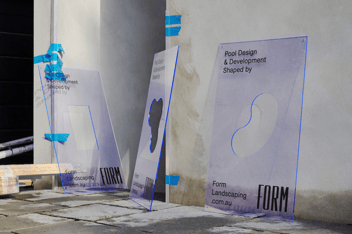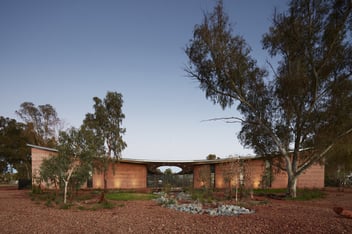Fireplaces Reimagined: Design, Efficiency and the Future of Home Heating
Fireplaces are being redefined for modern living.
At The-Arc Sydney on 16 October, the atmosphere inside the Overseas Passenger Terminal was buzzing. Among the many displays, Rinnai’s stand was one of the busiest — a reminder that the fireplace still captures the imagination of architects and designers. But this wasn’t about nostalgia for brick chimneys or traditional hearths. What drew specifiers in was the way fireplaces are being reimagined as part of the architectural language: sleek, efficient, and intelligent.
Fireplaces today are no longer just a way to heat a room. They are design statements, sculptural elements, and increasingly smart pieces of technology that respond to the way people live. Imagine walking into a project where the flame seems to hover inside the wall, controlled at the touch of a phone, or flicking into “ambience mode” during an evening client presentation. These are the moments that speak to architects about how far the humble fireplace has come.
At The-Arc Sydney, Rinnai showed that the future of heating isn’t hidden away in a plant room. It’s on display, integrated, and aligned with how specifiers want to deliver comfort and atmosphere while meeting strict efficiency standards.
A New Era for Fireplaces
Gone are the days when a fireplace served only as a source of heat and ambience. Today, the most forward-looking fireplace solutions integrate precision heating, connectivity, aesthetics and efficiency. This fusion meets the demands of contemporary design practice, sustainability goals, and architectural ambition.
 Photos: Rinnai EL Electric Fireplace & intuitive remote control handset
Photos: Rinnai EL Electric Fireplace & intuitive remote control handset
Some of the trends reshaping fireplace design include:
- Minimalist, frameless designs and panoramic viewing windows, which let the fire appear as a “living feature” embedded in architecture rather than a boxed appliance. (fireplacecorner.com.au)
- Smart and app-enabled control systems that allow flame intensity, temperature, and scheduling to be managed remotely or via building automation.
- Ultra-realistic flame effects and multisensory touches such as sound, shadow and log colour variation to replicate the beauty of traditional fires without their drawbacks.
- Higher energy efficiency and lower emissions achieved through sealed combustion, direct venting, optimised heat exchangers, and better insulation of fireboxes.
These evolutions are not just aesthetic. They respond to undeniable pressures in the built environment. According to CSIRO research, new Australian homes built between 2018 and 2022 had a 7.6% larger conditioned floor area on average compared to their 2018 counterparts and required about 10% more energy for heating and cooling, even as efficiency standards held steady. (ahd.csiro.au)
At the same time, modern fireplaces also comply with the National Construction Code (NCC). which sets standards for sealed combustion systems that draw in outside air and vent exhaust externally. This ensures they support comfort without compromising indoor air quality or energy efficiency (NCC 2022, Australian Building Codes Board).
What Rinnai Brought to The-Arc Sydney
At The-Arc Sydney, Rinnai’s display underscored this modern vision of fireplaces. Some of the standout features and product capabilities on show included:
- Gas fireplace lines with 5 star and 5.5 star efficiency ratings such as the 1250 gas fire which delivers up to 5.5 stars in energy rating for open plan spaces.
- Flame realism and smart controls. Many of Rinnai’s gas and electric fires offer WiFi and remote compatibility along with richly customisable visual effects.
- Flexible design and installation options including freestanding, built-in (inbuilt), or double-sided models that adapt to different architectural conditions.
- New electric fire innovations, such as the EL series, with ultra-realistic flames, multiple flame styles, and smart home integration.
- Warranty and long-life engineering with 10-year heat exchanger guarantees in many models.
For architects and designers at the event, the experience highlighted how these products can become centrepieces in their projects. In a full event environment, the visual gravitas
of Rinnai’s fireplaces drew attention and reinforced how modern heating can elevate a space.
Why This Matters for the Design Community
For architects and designers, the fireplace is shifting from a functional afterthought to a tool that can shape atmosphere, narrative, and client experience. At The-Arc Sydney, Rinnai’s showcase sparked conversations not about kilowatts, but about how fire can become part of a spatial story.
- Integration, not interruption
Instead of bulky surrounds or visible vents, frameless and panoramic models are blending into interiors. The fire becomes a seamless extension of the material palette rather than an appliance tacked on at the end. - Designing for flexibility
From double-sided fireplaces that connect two spaces, to slimline electric models suited to apartments, specifiers now have options that fit diverse project scales. This opens opportunities for more creative placements, from lobbies to multi-residential living rooms. - A sustainability lens
Efficiency ratings are no longer just compliance boxes to tick. For many clients, they are part of brand and lifestyle identity. Direct venting, sealed combustion and smart controls allow designers to present fireplaces as compatible with low-carbon goals while still delivering the atmosphere clients want. - Technology that disappears
Smart controls, app integration and adaptive flame effects mean that the technology supports the experience without overwhelming it. For design professionals, this removes friction and elevates the focus back onto how the space feels.
The fireplace, once a symbol of tradition, is becoming a statement of progress. For specifiers, it represents the kind of element that can tie together form, function and client aspiration - a reminder that sometimes the smallest details can anchor the boldest designs.
Where Fireplaces Fit in the Future of Australian Design
As design priorities shift towards sustainability, wellness and experience, the role of the fireplace is being redefined. It is no longer simply about warmth. It is about atmosphere, storytelling and the ability to balance client desires with environmental responsibility.
At The-Arc Sydney, the interest around Rinnai’s stand showed that specifiers are looking for elements that can spark imagination as well as meet performance standards. Fireplaces are now part of that conversation.
Looking ahead, we can expect to see fireplaces used as:
- Sculptural focal points in multi-residential and commercial projects, offering atmosphere without excess energy demand.
- Adaptive design features that link interior experience with building performance through smart control and integration.
-
Sustainable choices that show clients design can remain aspirational while also aligning with net-zero goals.
For architects and designers, the challenge is no longer whether to include a fireplace, but how to harness it as part of a holistic design vision. The fire has always drawn people together. Now, reimagined through design and technology, it has the potential to connect spaces, ideas and futures.
The-Arc Sydney provided a high-visibility platform for Rinnai to demonstrate that fireplaces are no longer nostalgic add-ons but a vital component of contemporary, efficient and design-led spaces. As architects, designers and specifiers increasingly demand solutions that marry form and performance, fireplaces are being reimagined for the next era of Australian buildings.
To learn more about Rinnai’s solutions, visit www.rinnai.com.au or contact Elizabeta Zvezdakovski to start the conversation.









